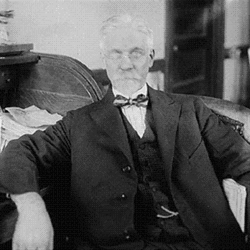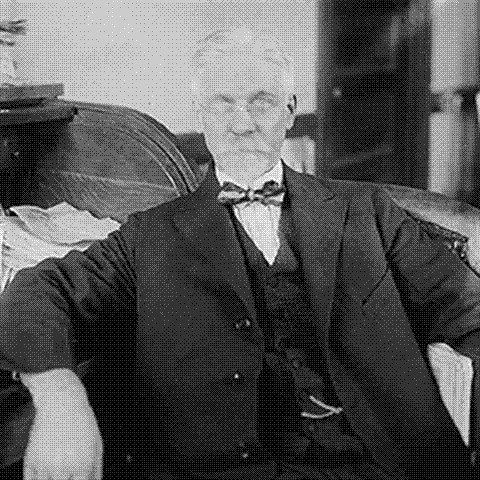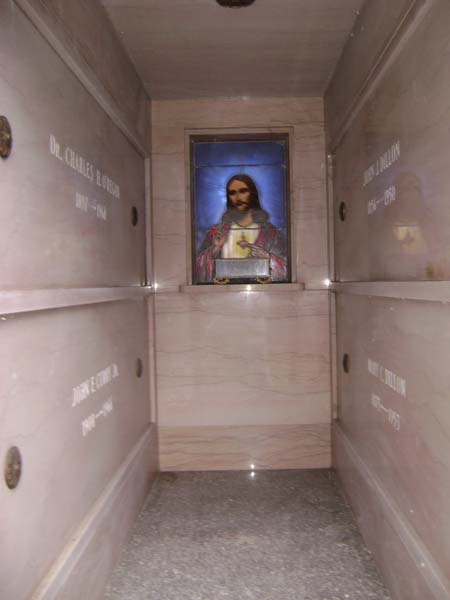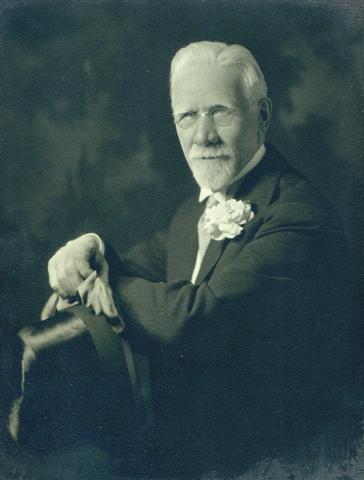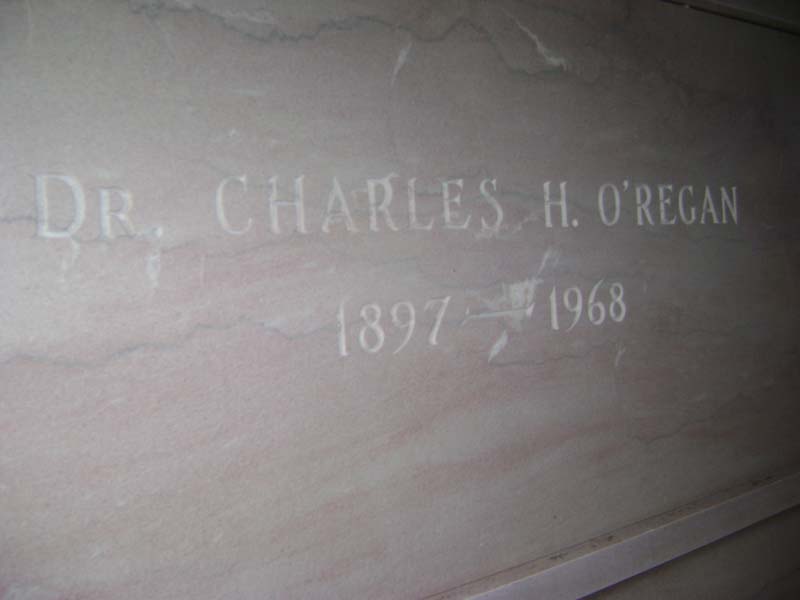Mr. Dillon, in 1915-16, was the first Commissioner of the State Department of Food and Markets, now the Department of Agriculture and Markets. In 1914 he was named to the commission that organized the State Land Bank and later served as treasurer and director of the Land Bank.
For fifty-eight years Mr. Dillon crusaded to protect farmers from frauds and commercial exploitation. This interest dated back to his boyhood on his father's farm in Sullivan County, when a commission merchant sold a calf for his father and charged as much for the service as the animal brought.
Taught School in Youth
Born in Mongaup Valley, the son of John and Mary Welsh Dillon, he attended Liberty (N.Y.) Institute and Albany College. He began teaching school in Sullivan County in 1874. From 1884 to 1890 he was a writer and later associate editor of the Orange County Farmer at Port Jervis, N.Y.
In 1890 he joined the Rural New Yorker as advertising manager. Two years later he became editor and publisher. At his death he was also president and director of the Rural Savings and Loan Association, and a director of the Sherman Apartment Hotel.
Running the Rural New Yorker like a business bureau for farmers, Mr. Dillon rejected advertising which he felt failed to "give the farmer a hundred cents worth for his dollar." Within a year or two, after taking over the periodical, he began running a guarantee to make good all losses suffered by subscribers through trusting any advertisement in its columns. The result of this policy was to build up a wide following of farmers whose trust in the Rural New Yorker was implicit.
Led Milk Strike in 1916
Besides closing his pages to unscrupulous advertisers, he ran blunt and vigorous exposes of frauds against farmers, and castigated middlemen who did not give farmers a fair share of profits.
In 1916, as Commissioner of Food and Markets, Mr. Dillon led a strike of farmers against milk distributors. At the end of the second week, the prices paid farmers were raised. While commissioner, Mr. Dillon also was president of the New York State Agricultural Association. He was a member of the New York State Grange.
He wrote several books, including, "Hind Sights," 1911, an expose of frauds practiced on farmers; "Organized Co-Operation." in 1923, and in 1941, "Seven Decades of Milk," a history of the mild industry in New York State.
Surviving are his widow , the former Mary C. May; four daughters, Miss Helene Dillon, Mrs. Catherine McGratty, Mrs. Julia D. Berghold and Mrs. Virginia Curry; twelve grandchildren, and two sisters, Miss Agnes and Miss Julia Dillon of Montgomery, N.Y.
Mr. Dillon, in 1915-16, was the first Commissioner of the State Department of Food and Markets, now the Department of Agriculture and Markets. In 1914 he was named to the commission that organized the State Land Bank and later served as treasurer and director of the Land Bank.
For fifty-eight years Mr. Dillon crusaded to protect farmers from frauds and commercial exploitation. This interest dated back to his boyhood on his father's farm in Sullivan County, when a commission merchant sold a calf for his father and charged as much for the service as the animal brought.
Taught School in Youth
Born in Mongaup Valley, the son of John and Mary Welsh Dillon, he attended Liberty (N.Y.) Institute and Albany College. He began teaching school in Sullivan County in 1874. From 1884 to 1890 he was a writer and later associate editor of the Orange County Farmer at Port Jervis, N.Y.
In 1890 he joined the Rural New Yorker as advertising manager. Two years later he became editor and publisher. At his death he was also president and director of the Rural Savings and Loan Association, and a director of the Sherman Apartment Hotel.
Running the Rural New Yorker like a business bureau for farmers, Mr. Dillon rejected advertising which he felt failed to "give the farmer a hundred cents worth for his dollar." Within a year or two, after taking over the periodical, he began running a guarantee to make good all losses suffered by subscribers through trusting any advertisement in its columns. The result of this policy was to build up a wide following of farmers whose trust in the Rural New Yorker was implicit.
Led Milk Strike in 1916
Besides closing his pages to unscrupulous advertisers, he ran blunt and vigorous exposes of frauds against farmers, and castigated middlemen who did not give farmers a fair share of profits.
In 1916, as Commissioner of Food and Markets, Mr. Dillon led a strike of farmers against milk distributors. At the end of the second week, the prices paid farmers were raised. While commissioner, Mr. Dillon also was president of the New York State Agricultural Association. He was a member of the New York State Grange.
He wrote several books, including, "Hind Sights," 1911, an expose of frauds practiced on farmers; "Organized Co-Operation." in 1923, and in 1941, "Seven Decades of Milk," a history of the mild industry in New York State.
Surviving are his widow , the former Mary C. May; four daughters, Miss Helene Dillon, Mrs. Catherine McGratty, Mrs. Julia D. Berghold and Mrs. Virginia Curry; twelve grandchildren, and two sisters, Miss Agnes and Miss Julia Dillon of Montgomery, N.Y.
